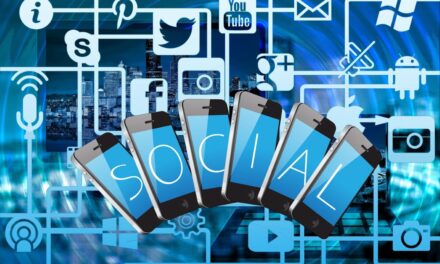In marketing in general, many “trends” become obsolete from year to year. Email marketing is no exception. Emailing is very effective, especially if you have a well -defined strategy that is not considered exceeded. Knowing what to expect and how customer preferences will evolve in the coming months gives brands a considerable advantage over their competitors. In this article, find the 7 e-mailing trends for 2022.
#1 Create hyper-personalized emails
Personalized emails are part of the past. In 2022, only hyper-personalized emails will bring conversions.
71 % of subscribers will decide to engage in an email according to the Personalization level offered. You must therefore go further than simply include the first name of your prospect in the object lines.
Hyper-personalized emails use data from several contact points with the customer to offer Highly personalized experiences. For example, this is to send emails containing product recommendations based on previous purchasesmonthly/annual use reports and personalized offers based on behavior.
The best example we can give you is that of Spotify. Each year, the audio streaming company highlights listening habits of each user and shares them on several channels. The following email includes figures specific to the subscriber which receives it. An excellent tactic to show how the brand makes each unique customer.
#2 Artificial intelligence
Artificial intelligence (AI) was the word fashionable in almost all sectors so far, and, in 2022, it began to arrive in emailing.
AI tools will become an important part of Email Marketing Due to the many data points that brands must take into account today. Having a large number of data on consumers does not lead to anything if you cannot transform them into usable and reproducible information. This is where AI comes into play. Thanks to AI tools, you can process a large number of data, develop better analyzes, follow customer trends and predict user actions.
But that doesn't stop there. AI can help Prospect lists segmentations, one of the most underused elements of e-mailing campaigns. Segmentation allows you to test your emails by creating smaller groups of recipients sharing the same characteristics. The AI can pass the data to a fine comb to create segmented lists that you can target.
#3 Micro-segmentation
As evoked briefly, Customer segmentation is a very beneficial method for boosting conversion rates.
In 2022, it is time to go from segmentation to micro-segmentation. This implies diving in depth into the behavioral data of customers, their preferences, their location, their personality, etc. Before placing them in certain categories of email lists.
Studies have shown that The needs of your audience are never the same. They change quite often. This means that your email lists must updateor even renewed according to their current behavior. One of the ways to achieve this is to include an investigation in your emails to keep you informed of the evolution of your audience's needs and preferences. Micro-segmentation can be carried out on the basis of several characteristics such as:
- Location (location of the home, the office, frequented places, etc.)
- Personal purchase habits and favorites (Like the favorite moment to shop, favorite eating habits, the favorite moment to read emails, the history of returns to abandoned baskets, etc.)
- Band age, sex, profession
- Travel history (favorite travel places, history of previous trips, etc.)
A micro-segmentation of your email list may increase the opening rate of 203 %. It is thereforeA marketing strategy crucial that you will not want to miss in 2022.
#4 Automation
If you haven't taken the train to E-mails automationyou miss a high commitment from your audience.
Whatever your efforts, you cannot manually reach your prospects when they are ready to convert. This is the reason why automation was created; to facilitate the work of marketers by creating scenarios “if” and “when” send messages triggered by behavior and action.
Known as the name triggered emails, or marketing dripa sequence is developed on the basis of which the right messages are sent to the right people, at the right time. We once again suggest integrating micro-segmentation when creating these automated messages in order to provide Ultra-personalized experiences.
#5 Privacy in focus
After the introduction of the GDPRthe trends in marketing email in confidentiality have known big changes. Professionals must now integrate confidentiality and consent directly into their strategies to comply with constantly evolving laws and regulations.
Only 21% Consumers trust large companies for their data, which shows that there is still a lot of work to do. You must be transparent On the way you collect data and communicate the exact process to your subscriber. The use of double opt-in,, Respect for opt-ou requestst and the fact of not to be invasive are good starting points. You will be surprised to know how many customers prefer honesty for aggressive sale.
Speaking of confidentiality, since the beginning of 2022, The new update of the Apple policy has rendered the opening rates of e-mails unnecessary. The content of the e-mail containing The monitoring pixel is loaded even before the user opens emails on iOS and macOS devices, which makes follow -up difficult. Marketing specialists must turn to more organic monitoring methods, such as time triggers and consent measures. To make it work, you must optimize the best moments To send emails to your audience, especially thanks to automation.
#6 Interactivity
While competition continues to grow, marketing specialists are making more and more efforts to ensure that their email campaigns are captivating and attractive For users.
And, contrary to popular belief, it is not so difficult to make your campaigns interactive. In short, you can get interactivity even with the simplest steps. Here are some:
- The CTAs and the animated GIFs
- Gamification elements
- Image overview effects
- Adding a dark mode in addition to normal mode
- Surveys, surveys and other contents generated by users
- Adding audios.
#7 The content generated by users
The best way to deliver your message and convince your readers to take action is to include generated contents by users inside emails.
As the name suggests, this is any type of Contents created by users and shared by brands. The content generated by users can take several forms, in particular messages on social networks, Positive and negative opinions, case studies, surveys, blog articles or webinaries.
When you know that 83 % Internet users trust customer opinions more than advertising a brand, which is why you should include content generated by users inside your emails.






